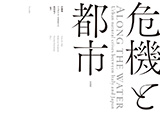危機と都市
Along the water Urban natural crises between Italy and Japan
 伊藤毅、フェデリコ・スカローニ、松田法子 編著(左右社)
伊藤毅、フェデリコ・スカローニ、松田法子 編著(左右社)『危機と都市 Along the water Urban natural crises between Italy and Japan』
(和英対訳)
Takeshi ITO, Federico SCARONI, and Noriko MATSUDA(ed.), Along the water Urban natural crises between Italy and Japan, (Tokyo: Sayusha, 2017). Printed in English and Japanese.
本書は日本とイタリアにおける災害の歴史を比較都市史的観点から捉えることを目的として編まれた。
また本書はこうした自然災害を、従来のように外から人間居住を襲う不確定な災害とみるだけでなく、むしろ人間が自然とともに居住を構築していくうえで不可分な要素として捉え直すことを試みている。
This book was edited with the purpose of grasping the history of disasters within Italy and Japan, from the viewpoint of comparative urban history.
And it is an attempt to view such natural disasters not just as something indeterminate which ravages human dwellings from the outside --as has been done until now-- but also as the phenomenon of humans building dwellings together with nature, grasped altogether as an indivisible element.
本書は大きく3 つのパートから構成される。
最初のパートは、比較的長い歴史的時間を組み込んだ「危機都市論」で、ローマ、京都、ミラノの都市史を扱った論文を集めた。「時間」というファクターから災害と都市形成のインタラクティブな関係を追究している。
第二のパートは、災害と都市を空間的広がり(「領域」)をベースとし、災害と居住の共存という観点から捉え直した論考からなる。東日本大震災の1000年前の事例として知られた貞観地震の東北における被害領域と復興を考古学的に実証した論文を皮切りに、中世から近代にかけてのトスカーナ地方における河川の氾濫の 変遷と人間社会の関係、新潟の蒲原平野の16~19世紀における集落立地を、氾濫原・湿地・砂洲という動く大地から捉え直した論文などを収録した。
第三のパートは災害のたびごとに逞しく再生してゆく都市、都市文化を重層していく地域について、イタリアのナポリ、北イタリアの河川沿いの地域、パドヴァ周辺地域を取り上げた。またこのパートの最後には日本とイタリアの比較論の媒介項として、アジアにおける人々の居住と水の複層的なあり方が明らかにされている。
以上、本書は日本とイタリアを比較の軸に据え、災害ないしは危機という非常事態を都市史の内部に包含しつつ、都市史の新たな地平を開拓することを意図した挑戦作である。(本書「序」より抜粋)
*
This work is divided into three main parts.
In the first part, we have gathered a number of studies dealing with our “theory of cities in crisis” (which incorporates a comparatively long historical timespan), as well as the urban histories of Rome, Kyoto and Milan. Each study, in its own way, will cross-examine the interactive relationship between disasters and the formative process of cities, by starting with the so-called factor of “time/timespan”.
The second part consists of a series of enquiries based on the spatial expanse of cities and disasters (i.e., their “territory”), re-interpreting it from the viewpoint of the coexistence of disasters and dwellings. Starting with an academic study that archaeologically corroborates the disaster extents and recovery of the Tohoku region after the “Jogan” earthquake (i.e. the Sanriku Earthquake, which took place in 869 AD, roughly 1000 years before the Great East Japan Earthquake), the subsequent papers deal with subjects such as: the relationship between the vicissitudes of river floods in the Toscana region and human society between the medieval and modern periods; or the reappraisal of dynamic ground environments in which human settlements were established, namely the floodplains, marshlands and sandbars of the Kambara Floodplains in Niigata between the sixteenth and nineteenth centuries.
As for the third and final part, which is mainly concerned with the robust post-disaster regeneration of cities and the ongoing stratification of urban culture at the regional level, its concrete objects of analysis are the region around Padua, the areas located along the rivers of North Italy, and Naples. Near the end of this part, the multilayered existence of human dwellings and water within Asia will be made clear, serving as a medium within our analytical comparison of Japan and Italy. (an excerpt from Preface)
